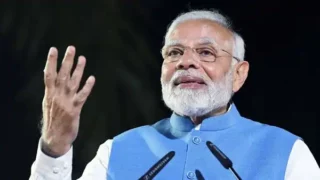The Bharatiya Janata Party’s decisive triumph in the country’s first electoral struggle between the political Left and the Right, with a two-thirds majority in Tripura, seems to have been plotted since a considerable amount of time. Even though the CPM might have gotten a whiff of the same, they hardly did anything to resist BJP’s tactics of gaining control over the communist bastion.
The BJP retained control in Tripura, a former Communist stronghold where the CPM failed to hold the fort, by securing 32 seats. The BJP-NDPP alliance secured 37 seats in Nagaland, as well.
End Of The Communist Reign?
The BJP and the Indigenous People’s Front of Tripura, a sectoral ally, gained 33 seats, which is 11 fewer than in 2018 but two more than the threshold for a majority. The TIPRA Motha, which placed a strong emphasis on the 20 of the 60 Assembly seats held by “Tiprasa” (tribal) people, lived up to expectations by gaining 13 of the 42 seats it was up for.
Also Read: North-East Elections: How Important It Is For BJP To Win
The conclusion was a disappointment again for Left Front, whose seat tally dropped from 16 to 11 from just five years earlier. But thanks to a seat-sharing arrangement with the Left Front, the Congress came out ahead, taking three of the 13 seats up for grabs. In 2018, the big old party came up empty.
A Defining Victory For The Ruling Party?
The concentration of non-tribal electors leery of the Tipra Motha’s Greater Tipraland demand is thought to have contributed to the BJP’s victory. In 40 districts, non-tribal people are the majority.
The PM noted that the BJP had given Nagaland its first female Rajya Sabha member in S. Phangnon Konyak on a day when two women were elected as MLAs for the first time in the Nagaland Legislature.
As in other States, the support of their mothers and sisters in the northeastern States serves as their defense in political conflicts, the PM claimed.
Not Just A Game Of Numbers?
In an objective sense, the BJP views the influence of its performance in the Assembly elections in Tripura, Meghalaya, and Nagaland as much more than a numbers game, as it helps the perception of the party as being more than one limited to the Hindi heartland, capable of winning in states with a majority of minorities, and on a platform of development.
What Exactly Is The Role Of The 7th Pay Commission?
The BJP vowed to replace the 4th Pay Commission in the state with the 7th Pay Commission in order to win over the support of about 4 lakh government employees.
Under the 7th Pay Commission, a government employee’s salary will at least rise to Rs 35,000 from Rs 20,000 under the 4th Pay Commission. The defense of chief minister Manik Sarkar that Manipur had failed to implement the 7th Pay Commission sounded hollow in a state that is heavily reliant on the services sector due to a lack of job opportunities, particularly coming from a man vying for his fifth term in office.
The National Liberation Front of Tripura (NLFT) peace agreement, the crackdown on drug trafficking, and the general improvement in law and order were touted as achievements of the BJP administration in the state where the election was seen as a struggle between conservative and communist ideologies.
Disclaimer: This article is fact-checked
Image Credits: Google Photos
Sources: The Economic Times, The Hindu, The Indian Express
Connect with the Blogger: Srotoswini Ghatak
This post is tagged under: Tripura Elections, BJP, Meghalaya Government, Nagaland, Minorities during Modi government, 7th Pay Commission, Assembly Elections, NLFT, Manik Sarkar, Tripraland, CPM party
Disclaimer: We do not hold any right, copyright over any of the images used, these have been taken from Google. In case of credits or removal, the owner may kindly mail us.
Also Recommended:
BJP’s Election Coup In The North-East And What It Means For Future Elections































